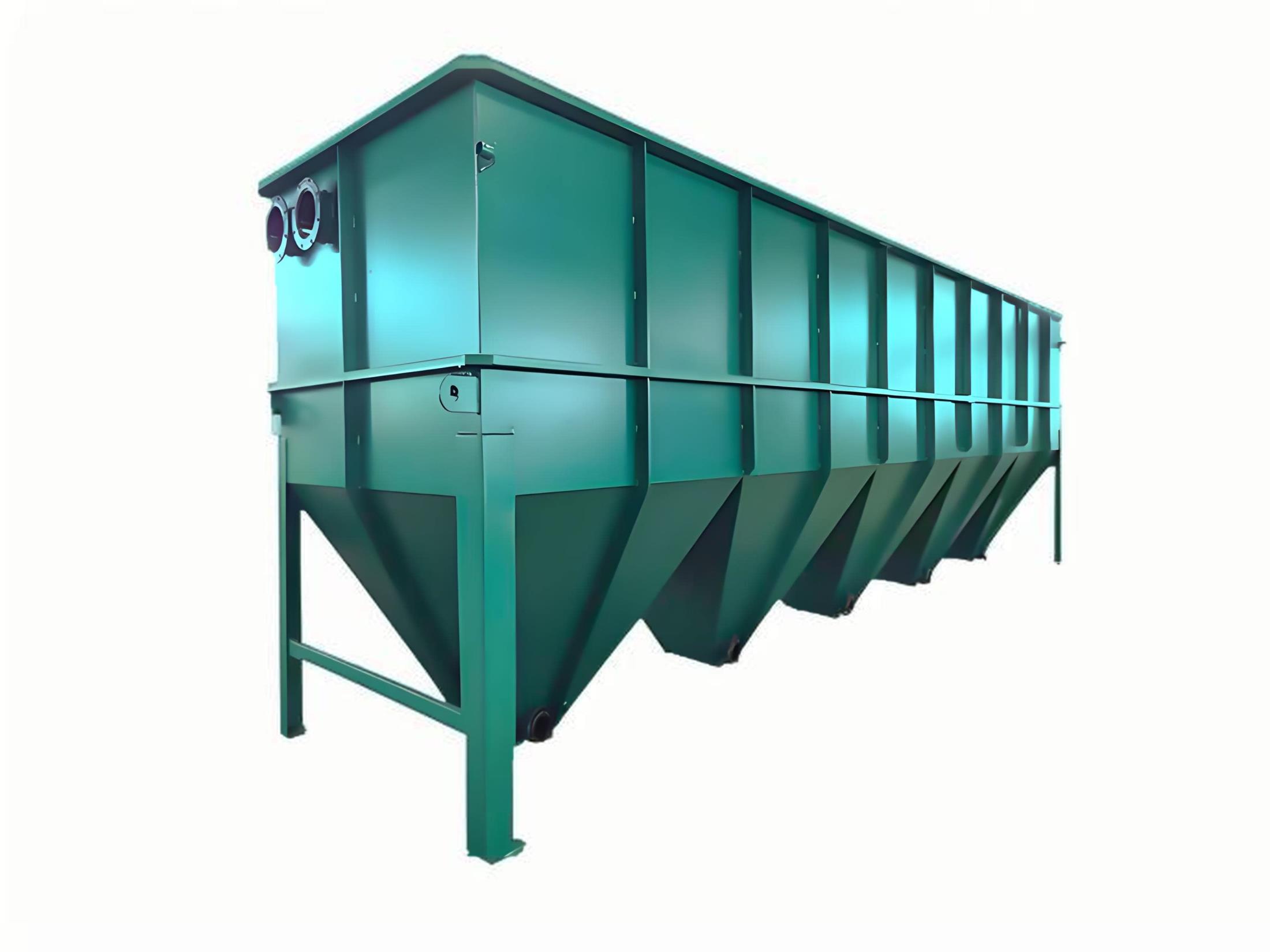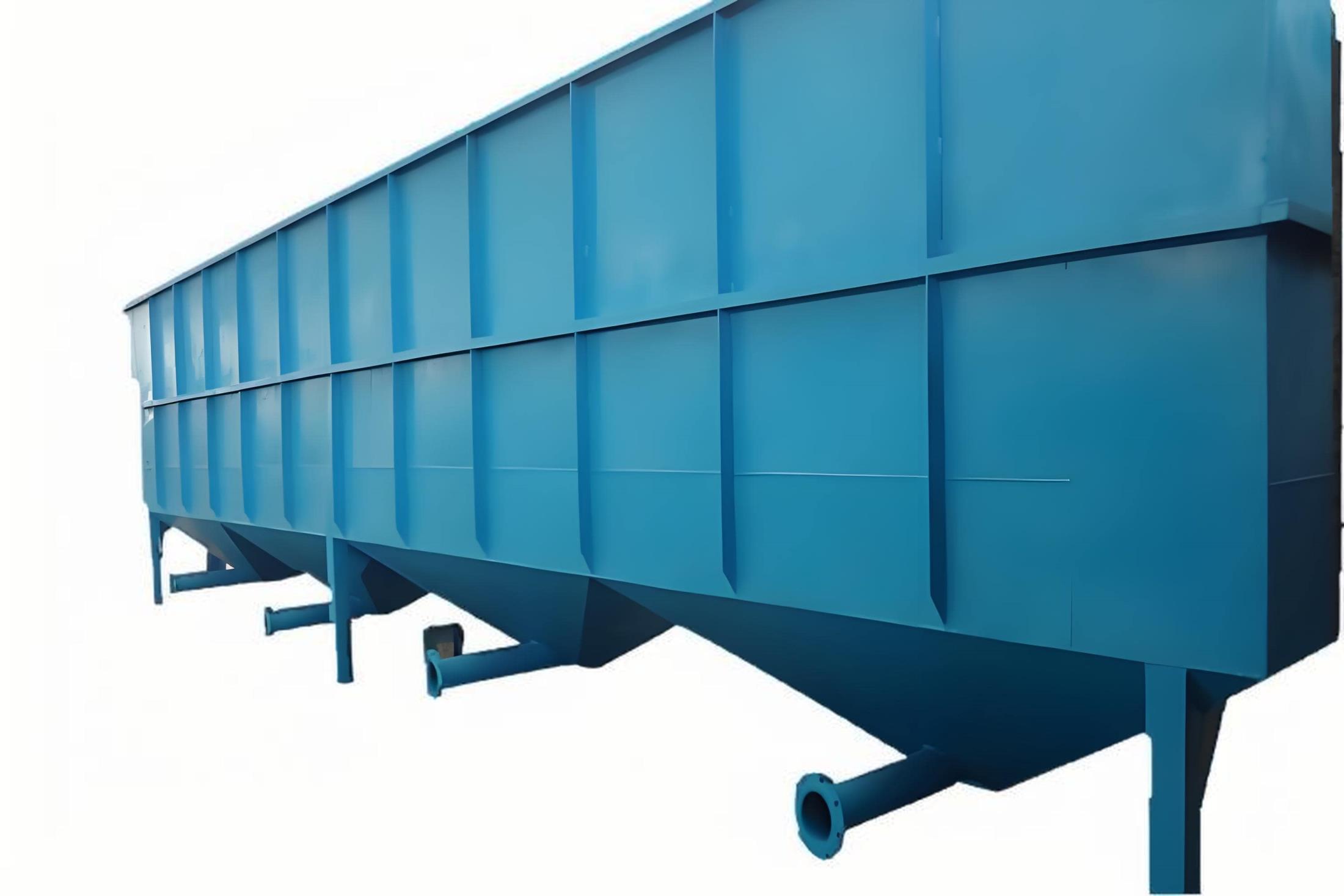The inclined tube sedimentation tank is a highly efficient composite sedimentation tank designed based on the shallow tank sedimentation theory; it is also collectively referred to as a shallow tank sedimentation tank.
The operating principle of the high-efficiency inclined tube sedimentation tank is primarily reflected in the following five aspects:
Innovative Integrated Flocculation Reactor: This uniquely designed reaction area lays the foundation for the subsequent sedimentation process.
Slow Transfer from the Plug Flow Reactor to the Sedimentation Tank: Slow material transfer from the plug flow reactor to the sedimentation tank facilitates a smooth sedimentation process.
Sludge External Circulation System: This system recirculates a portion of the settled sludge, positively impacting the sedimentation process.
Inclined Tube Sedimentation Mechanism: The inclined tube structure increases the sedimentation area and improves sedimentation efficiency.
Use of Synthetic Flocculant + Polymer Coagulant: The two agents work together to promote the coagulation and precipitation of impurities in the water.
The RL high-efficiency sedimentation tank is one of the most widely used high-efficiency sedimentation tanks. The cement mixture flows naturally into the lower portion of the inclined tube of the clarifier by gravity. In the sedimentation zone below the inclined tube, the sludge and water are separated. During this process, sediment is hindered and thus settles. Therefore, within the same structure, the entire sedimentation process is divided into two stages: deep obstructed sedimentation and shallow inclined tube sedimentation. The obstructed separation process in the sedimentation zone is a key factor in determining the geometric dimensions of the clarifier. The upward flow velocity within the tank is determined by the area covered by the inclined tubes (the upward flow velocity is 23 m/h).
An efficient sedimentation tank possesses the following five key factors:
Uniform flocs and a high density of alum flocs: These contribute to a more efficient sedimentation process.
An intensive design due to the fast settling rate (15-40 m/h): This ensures effective sedimentation while saving space and resources.
Efficient sludge thickening: The sludge can be effectively concentrated and treated.
High effluent quality after sedimentation, generally within 10 NTU: The treated water meets a high standard of cleanliness.
Strong resistance to shock loads and is not easily affected by sudden changes in shock loads: The tank can operate stably under complex flow conditions.
High-efficiency sedimentation tanks are capable of operating normally even under wide fluctuations in flow rates. They consist of three main components: the reaction tank, the pre-sedimentation tank - the concentrator tank, and the inclined tube separation tank.
Total Flow Rate (m³/day): Indicates the total volume of water treated in a day.
Unit Flow Rate (m³/hour): The volume of water treated per hour.
Reaction Tank Unit Dimensions (m): The dimensions of the reaction tank in each dimension.
Pre-sedimentation Tank/Concentrator Tank Unit Dimensions (m): The dimensions of the pre-sedimentation tank and concentrator tank in each dimension.
Inclined Tube Separation Zone Unit Area (m²): The area of the inclined tube separation zone.
Unit Area (m²): The correlation between total area and inclined tube area. This data is used to analyze indicators such as sedimentation efficiency.
Flow Rate (m³/m²/hour): The volume of water treated per unit area per unit time.
The on-site PLC system receives information from two sludge interface detectors and the scraper torque switch of each high-density clarifier, using this information to control the operation of the sludge pump and scraper.
Downstream of the high-efficiency sedimentation tank, two turbidity meters (one for each unit) are installed. These monitor the turbidity of the clarified water and feed the detected signals back to the PLC control system in the coagulation reaction area, enabling timely adjustments to the dosage of coagulant and flocculant aid.
High-efficiency sedimentation tanks have the advantages of a small footprint, reduced civil engineering investment, strong impact load resistance, wide applicability, and high efficiency, and have broad application prospects in the water treatment industry.


Copyright 2025 All Right Reserved. Hebei Fupeng Environmental Protection Technology Group Co., LTD